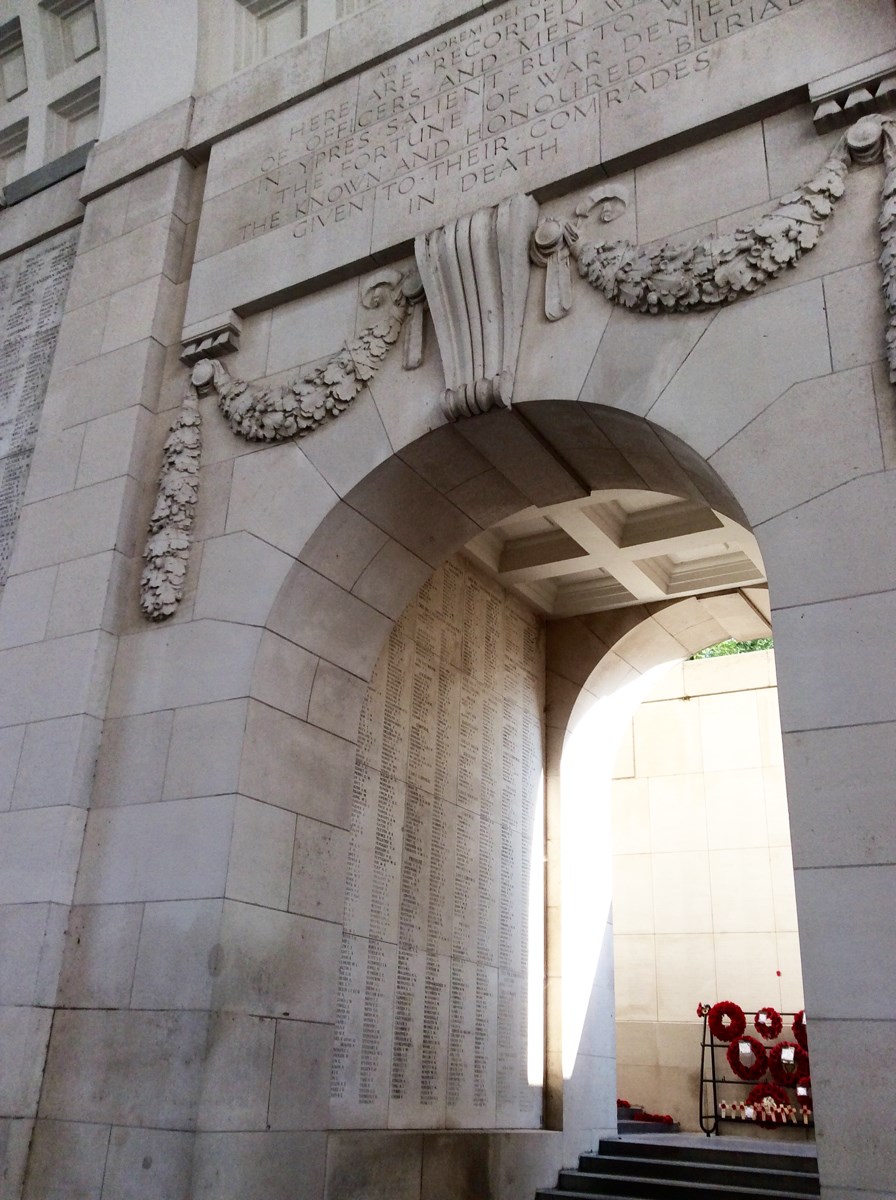Last week I wrote about the tour I took to Flanders recently. Although not originally part of my plan, which was to visit Bruges and Brussels, I’m so glad I did! On the centenary of the end of WW1, I had little idea about the immense impact of the war on that small country. Our Belgian guide Philippe told us that in that one-day tour, we were seeing altogether “more than 200,000 graves from soldiers of the Commonwealth, and more than 100,000 names from soldiers with no known grave as well. So in total almost 200,000 names where a family can come and look at, either on a memorial to the missing such as Menin Gate or on a grave.”
The city of Ypres was completely rebuilt following the war and the concrete walls of the gorgeous Menin Gate are inscribed with tens of thousands of names of soldiers. Many buildings were rebuilt in the original style and the war museum is gorgeously housed in a building using not just the original style but many of the original stones.
Belgians have developed excellent skills in dealing with undetonated explosives. Even 100 years later, Belgian farmers continue to find casings and shrapnel in their fields when working the land and every year someone dies or is injured when one is accidentally unearthed.
At all the cemeteries, we saw many school children, and I asked if this was usual. Philippe said that fall is the time of year when more school groups visit but that in the lead up to the centenary there are more Belgian, Dutch and even German school groups visiting. Belgium takes pride in keeping the cemeteries looking beautiful and also gets help from a Commonwealth fund.
Halfway around the world back in Elphinstone during those war years, a little-known story: Betty Keller and Rosella Leslie in their book Bright Seas, Pioneer Spirits tell of the influence of Finnish pacifists living in Gibsons at that time and a pacifist preacher by the name of J.S. Woodsworth. They write that these views influenced some young men who, in 1917 after the federal government legislated conscription, hid out on Mount Elphinstone to avoid being drafted. A local boy who went AWOL headed for the evaders’ camp, probably knowing people there. Still wearing his uniform, he was mistaken for army coming to capture them and was shot. No one was ever tried for his death.
In news from Elphinstone, there will be an appreciation potluck for Lorne Lewis on Saturday, Nov. 17 from 5 to 8 p.m. at Frank West Hall. The Elphinstone Community Association (ECA) is organizing the second annual Elphinstone November social at Chaster House on Saturday, Nov. 24 from 5 to 10 p.m. Naomi Fleschhut will be on hand to talk about Resilient Neighbourhoods. Bring potluck and your own plate, utensils and cup, and the ECA will provide coffee, tea and juice.
If you have Elphinstone news, contact me by email at [email protected]



